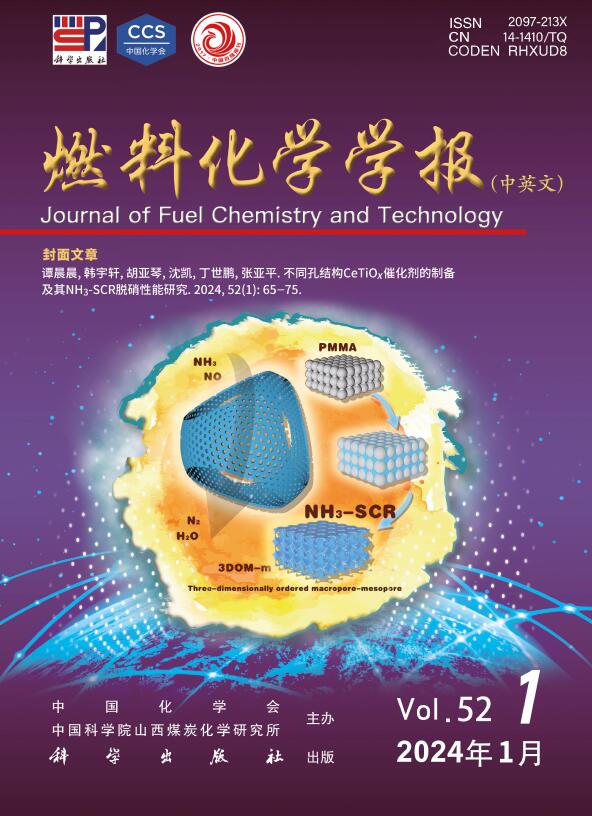Research progress on antimony selenide photocathode for photocatalytic water splitting
Q3 Energy
引用次数: 0
Abstract
The p-type semiconductor antimony selenide (Sb2Se3), with high absorption coefficient (> 105 cm–1) in the visible region, band gap of about 1.1 eV, simple binary composition with fixed orthogonal phase and low toxicity, is an excellent light absorber. So, it has been applied in photocatalytic (PEC) solar water splitting to produce hydrogen in recent years due to the excellent photoelectrochemical properties. In this work, the structure and properties of Sb2Se3 are outlined, focus on the development of Sb2Se3-based photoelectrocathodes for PEC water splitting to improve the efficiency of solar hydrogen production (STH) through morphology control, heterostructure construction, heteroatom doping and promotor modification. Then, future directions of the research for Sb2Se3-based photocathodes are discuss.
硒化锑光催化水分解阴极的研究进展
p型半导体硒化锑(Sb2Se3)具有高吸收系数(>;105 cm-1)可见区,带隙约1.1 eV,正交相固定,二元组成简单,毒性低,是一种优良的吸光剂。因此,由于其优异的光电化学性能,近年来已被应用于光催化(PEC)太阳能分解水制氢。本文概述了Sb2Se3的结构和性能,重点介绍了Sb2Se3基光电阴极的研究进展,通过形貌控制、异质结构构建、杂原子掺杂和启动子修饰等方法提高太阳能制氢效率。最后,对sb2se3基光电阴极的未来研究方向进行了展望。
本文章由计算机程序翻译,如有差异,请以英文原文为准。
求助全文
约1分钟内获得全文
求助全文
来源期刊

燃料化学学报
Chemical Engineering-Chemical Engineering (all)
CiteScore
2.80
自引率
0.00%
发文量
5825
期刊介绍:
Journal of Fuel Chemistry and Technology (Ranliao Huaxue Xuebao) is a Chinese Academy of Sciences(CAS) journal started in 1956, sponsored by the Chinese Chemical Society and the Institute of Coal Chemistry, Chinese Academy of Sciences(CAS). The journal is published bimonthly by Science Press in China and widely distributed in about 20 countries. Journal of Fuel Chemistry and Technology publishes reports of both basic and applied research in the chemistry and chemical engineering of many energy sources, including that involved in the nature, processing and utilization of coal, petroleum, oil shale, natural gas, biomass and synfuels, as well as related subjects of increasing interest such as C1 chemistry, pollutions control and new catalytic materials. Types of publications include original research articles, short communications, research notes and reviews. Both domestic and international contributors are welcome. Manuscripts written in Chinese or English will be accepted. Additional English titles, abstracts and key words should be included in Chinese manuscripts. All manuscripts are subject to critical review by the editorial committee, which is composed of about 10 foreign and 50 Chinese experts in fuel science. Journal of Fuel Chemistry and Technology has been a source of primary research work in fuel chemistry as a Chinese core scientific periodical.
 求助内容:
求助内容: 应助结果提醒方式:
应助结果提醒方式:


